The knee ligament is one of the largest and most complex. It is subjected to a large load every day, so it is not surprising that it periodically ceases to function normally. If your knees ache, their swelling is noticed and the pain is almost constant, then you should definitely consult your doctor. Such a pathological condition can be a signal of the development of one of the diseases that deforms the joint. Of course, it is necessary to learn to distinguish situations when a visit to the doctor is very necessary. But lack of treatment or self-medication can lead to complications.
Knee joint structure
To better understand why your knees hurt, you need to understand their anatomy. So the joint consists of the femur, tibia and patella. The two largest bones have two extensions each: the inner and outer condyles.
All surfaces that come in contact with each other are covered with hyaline cartilage. Thanks to him, the mobility of the knee joint is ensured, its cushioning properties. Around this bone junction is a kind of capsule, lined on the inside with a synovial layer. It is filled with synovial fluid, thanks to which the joint is nourished and its mobility is ensured.
The knee joint consists of more than just the bone. All its elements are joined by the cruciate ligaments and collaterals, the femoral muscles, the tendons. The kneecap is connected to other elements through its ligament. It takes 6 synovial bags for the knee to move. Nutrition and innervation of the presented joint is carried out through nerves and blood vessels, which are located in the soft tissues surrounding the joint.
Knee joint pain: causes
If the knee starts to hurt, swelling appears, mobility is limited and the discomfort is quite severe, you should immediately consult a doctor. If the destructive process has already begun, then it will be impossible to completely cure the knee. However, it will be possible to stop or slow down its progress.
So, we can distinguish such causes of pain in the knee joint:
- gonarthrosis.Occurs in almost 50% of all cases of joint damage. The pathology develops for a very long time. Among the symptoms of this disease, the following can be distinguished: the knee does not ache at rest, however, it becomes difficult for a person to climb stairs, walk for a long time, sit down and get up from his fungus. During movement, the patient hears a crack in the knee, his mobility decreases. Over time, due to cartilage consumption, the distance between bone surfaces decreases. In this case, osteophytes appear, the nerves and blood vessels are compressed, and the knee itself is deformed;
- meniscopathy, as well as the formation of meniscus cysts. Most often only one knee hurts. The cause of the pathology can be a single injury or periodic joint injury. During an irritation, the pain is acute, throbbing, sharp, severe. With this disease, the deformity of the joint does not threaten, but the inflammation can affect the synovial sacs;
- circulatory problems (necrosis).This spoils the nutrition of the knee. Most often, this condition occurs in adolescents. There are those who have very fast bone growth, in which their nutrition is somewhat difficult. If at first the pain in the knee joint is quite strong, then after a while its intensity decreases. The pain is usually localized at one point and does not spread to the entire knee. Discomfort may be exacerbated by hypothermia;
- arthritis.This is an inflammatory pathology of the knee, which can be diagnosed in young people, especially women. At the same time, the knee hurts a lot, the affected area is characterized by swelling, the skin becomes red. The pain at night becomes more pronounced. The knee hurts even at rest, when the weather changes. The reason for the development of pathology is excess body weight, old age, weakness of the immune system;
- bursit.This is an inflammatory lesion of the synovial sacs of the knee. Characteristic symptoms of the pathology are redness of the skin in the affected area, swelling and reduction of range of motion. The cavities of the synovial sacs are filled with exudates, which contains harmful microorganisms. The cause of the development of pathology is trauma, excessive physical activity. The knee not only hurts very badly, a person develops general weakness and disease;
- synovitisHere the inflammation affects the synovial membrane of the knee joint. At the same time, swelling and burning pain appear in the joint area;
- periartritis.This disease is most often diagnosed in women who have a large body weight and who are already 40 years old. At the same time, you feel discomfort when climbing stairs, when running your foot. The pathological process affects the tendons, ligaments and muscles, the joint capsule. The pain is aching, swelling appears in the limb;
- chondromatosis.This disease is characterized by the formation of small cartilage nodes, which are located in the shell of the articular sac. At the same time, dehydration of the joint is manifested, its mobility is limited, a crackle is heard when moving. Since the soft tissues are tight, the patient feels severe pain;
- chondromalacia patella.Here the cartilage undergoes degenerative changes: it simply dies. The reasons for this pathological condition are banal: knee injury, peculiarities of some professions. At the same time, the knee hurts a lot, the discomfort becomes more pronounced with each movement. On the left or right knee a crackle, crackle is heard very well. A person can practically not stand on the affected limb;
- bone tumor.Knee pain appears due to the growth of a neoplasm that compresses the soft tissues with nerves and blood vessels;
- Baker's cyst.This is a small hernia that can appear in young people and children from 3 to 7 years old. It is so small that it cannot always be diagnosed on examination. It does not pose a threat to human health and does not pose a concern. However, if it rises, then the ankle can be injured, especially when you bend and straighten the leg. If the hernia is large, then surgery is performed to remove it;
- knee tendinitis.This is an inflammation of the tendons in the knee area, which can not perform their functions normally. Almost everyone is affected by this disease. The pain is usually aching and the affected area reacts to weather changes;
- knee osteochondritis.This is where the cartilage peels off the articular surface. At first, the knee does not hurt much, but over time, its intensity increases and the inflammation joins the pathological process;
- Koenig's disease.Here, a portion of the cartilage can separate from the bone and move within the joint. At the same time, the movement becomes difficult, there is a slight pain. With progression, swelling of the knee joint is also observed. Treating the pathology in adults is more difficult than in children;
- Osgood-Schlatter Pathology.Provides the formation of lumps in the knee area. Most often, the disease is diagnosed in boys, as well as in people involved in sports. The pain is sharp, aggravated by the flexion and direction of the foot.
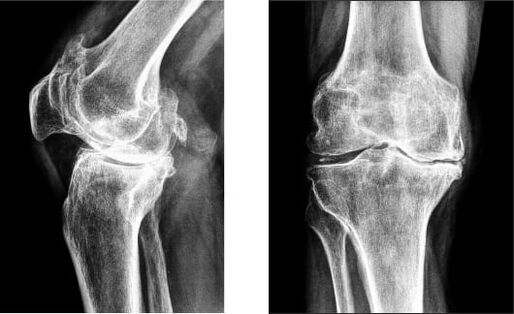
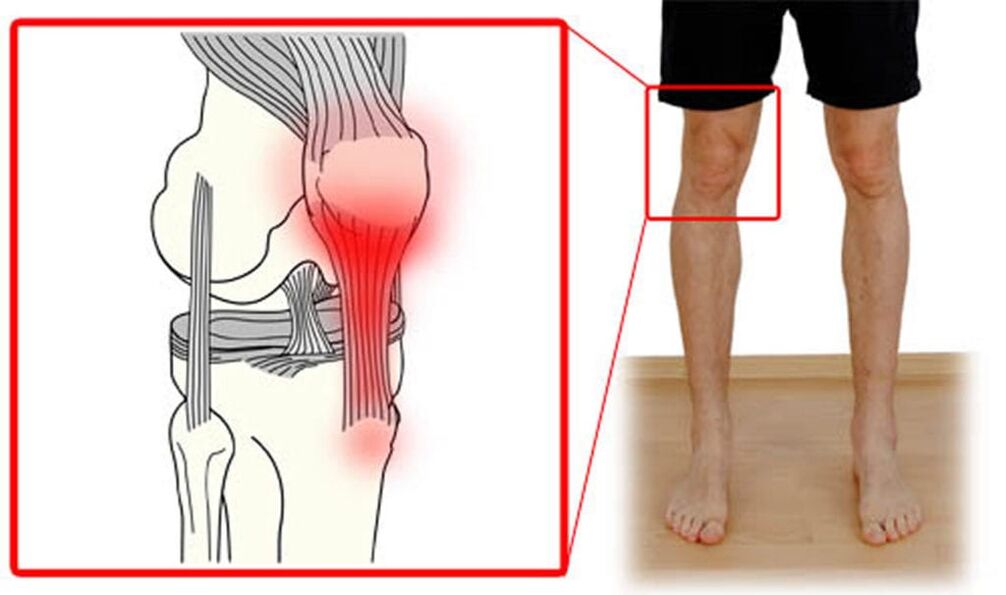
These are the main reasons, but not the only ones. Therefore, it is necessary to consider other factors, due to the impact of which there is knee pain.
Diseases of other organs, as a cause of knee pain
Some pathologies that are not related to the knee joint can cause pain in it:
- Fibromyalgia.The discomfort is localized to muscles and soft tissues, but can be attributed to nearby joints. The inflammatory process does not develop. In addition to aching pain in the knee joint, a person feels stiffness in movement, fatigue, he may experience convulsions.
- Dysplasia or coxarthrosis of the hip joint.The pain syndrome in this case extends to the entire leg.
- Sciatic nerve neuropathy.It is captured by the vertebrae of the lumbosacral spine. Strong throbbing pain may radiate to the thighs and knees.
What systemic pathologies can cause knee pain? In addition to the reasons already described above, there are other factors that contribute to the development of pain syndrome:
- gout.The disease presented occurs due to a violation of uric acid metabolism in the body. It is poorly removed from it, turning into salt deposits that accumulate in the joints. In this case, the knee may also hurt. And the pain is very sharp, sharp. Most often, the pathology occurs in men who abuse alcohol, eat improperly. In the affected area the skin reddens and at night the knee joint hurts more. The duration of the attack varies from a few days to a few weeks;
- osteoporosis.The pathology is associated with low bone density due to its improper formation. The pain in the knee joint is dull and aching, it is not so easy to remove it. The bones in this pathology are very susceptible to fractures;
- rheumatoid arthritis.This is a systemic pathology, which is characterized by inflammation of the connective tissue. It begins its active development with a decrease in the body's protective functions. Manifested by a feeling of stiffness, which a person may feel after a long stay in a state of rest;
- osteomyelitis.The bacterial pathology presented causes quite severe pain of a dull nature. In the affected wrist area, the skin becomes red, and discomfort increases with each movement. The risk of this disease is that its consequence is the onset of bone marrow death;
- infectious diseases.They are characterized by pain in the knee joint, which disappears after a course of antibiotic treatment;
- Paget's disease.In this case, the bone tissue is incorrectly formed, so the spine begins to deform. This pathology affects the tubular bones, which then become very fragile. Recognizing this disease is quite difficult, as the symptoms may not appear. The only thing that can indicate the presence of pathology is that the injured knee hurts at night and heat is felt at the site of the lesion.

If the knee pain was caused by a systemic disease or skeletal pathology, then it is not always possible to get rid of it completely. However, treatment must be carried out without fail so that the disease does not develop further or at least slow down its course.
Trauma as a cause of pain syndrome
Pathological processes in this case can develop both immediately after the injury and some time after it. We can distinguish such injuries of the knee joint:
- Ligaments torn, torn or torn in the knee.These injuries lead to the onset of "advance" joint syndrome. In addition, a person feels severe pain, develops ankle hemarthrosis, which becomes unstable.
- Injury.Here the intensity of the pain syndrome is low. There are no serious consequences after the injury. The swelling, as well as the hematoma, usually go away on their own in one to two weeks.
- Meniscus rupture.It results in a strong blow to the anterior region of the knee joint. Once the acute period of pathology has passed, the pain syndrome usually bothers the patient while climbing the stairs, which is quite difficult to implement. There is a slight swelling in the knee joint area.
- Fractures.Appears when falling from a great height or a strong shock effect. The pain is strong, sharp, swelling appears in the affected area and the skin fades. The victim can not stand on the injured leg. During a fracture, a crackle and crackle is heard and the bone may explode in the skin.
- Tendon fracture.This injury is not common, but leads first to acute pain, and then to pain. During walking, pain in the left or right knee increases.
- Knee joint dislocation.In this case, some of the component parts of the wrist may come out of it.
Trauma can cause chronic illness.
Most knee joint pathologies have similar symptoms, so it can be quite difficult to recognize them. This is why self-medication is not worth it, as it can make the situation worse.
Who is at risk
Knee pain, cracking and swelling in the affected area are more common in some people than others. The risk group includes those people who:
- Presence of primary pathologies.
- genetic predisposition.
- Constant sports overload of the knee.
- Excess body weight.
- Injury.
- I had an operation on my knee joint.
- Insufficient good development of the muscular apparatus of the knee joint.
In addition, women are more susceptible to knee diseases as well as people of advanced age and older.
In which cases it is necessary to consult a doctor
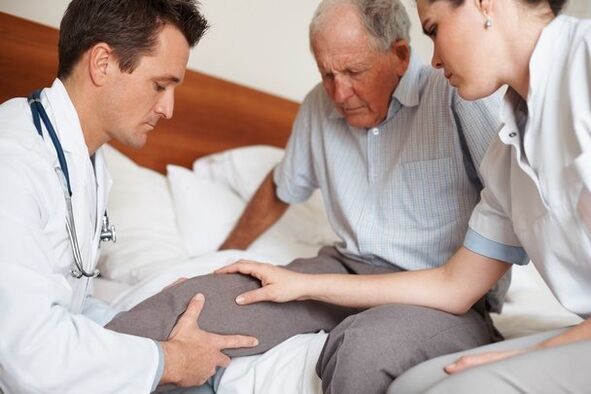
If a person feels that his knees hurt, then he should urgently contact a specialist in this case:
- The patient has more than two months experiencing excruciating pain, which does not allow him to sleep soundly at night.
- If the pain syndrome is characterized by high intensity, it appears suddenly.
- A crack is heard at the knee joint when you walk.
- The knees ache every day, and at a certain time, under certain conditions.
- In the knee joint occasionally feels instability.
- If there are additional pathological signs: skin rash, fever, chills.
- Painful pains appeared, which is accompanied by deformity of the joints, restriction of their mobility.
- Pain syndrome becomes a constant companion of a person.
- Signs of an inflammatory process appeared: redness of the skin, swelling, increase in local temperature in the affected area.
Already these signs are enough to make a decision to see a doctor. By delaying the visit, the patient increases the duration and complexity of therapy, as well as allows the pathology to develop further.
Varieties of pain
Why the knees hurt, most of the reasons for the development of the pathological condition are already clear. But the nature of the pain can be different. For example, depending on the disease that caused it, the pain is of the following nature:
- sharp, sharp.Causes rupture of meniscus or ligaments, reactive arthritis, acute phase of bursitis;
- dull, alluring.Bursitis or synovitis can provoke it;
- with pain.This type of pain is characteristic of osteoarthritis, gonarthrosis;
- pulsating.A person feels it with a meniscus injury or as a result of a deforming osteoarthritis lesion;
- burn.It is characteristic of sciatic nerve constriction as well as bone tuberculosis;
- stabbing.It is caused by a cyst in the synovial bursa. And stabbing pain is characteristic of osteoporosis, an old meniscus injury;
- drilling.Caused by osteomyelitis;
- periodic.Occurs when the patient develops inflammation of the tendons or muscles;
- shooting through.Causes constriction of nerve endings.
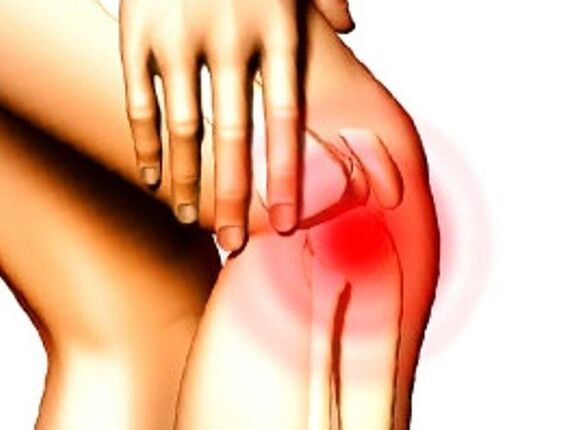
Diagnosis of pathology and first aid
Many people complain that their knees hurt and do not know what to do. But when you feel pain and cracks in the knee joint, you should definitely undergo an examination and start treatment.
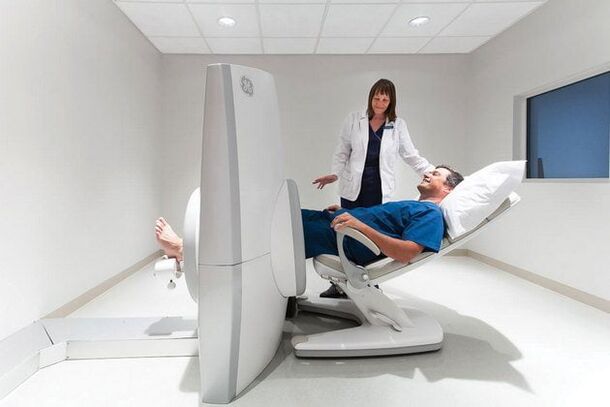
Diagnosis involves the use of such procedures:
- Laboratory tests of blood and urine.
- Blood chemistry.
- Bone marrow puncture and synovial fluid.
- Notices of the presence of bacterial microflora.
- Arthroscopy. This procedure is used both as a diagnosis and as a treatment for joint pain. It is easy to do and does not require a long rehabilitation period.
- Radiography.
- MRI or CT.
- ultrasound.
- Densitometry.
Knee pain: First aid
If a person feels pain or traction in the knee area, first of all, he should secure the rest of the limbs. Home treatment involves taking pain medication or anti-inflammatory medication.
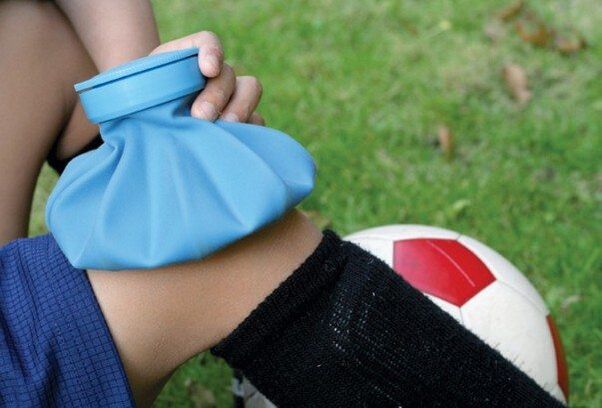
The pain can be relieved with a cold compress. Cooling is used as a method of relieving pain when the cause of the pain is trauma. The limb is immobile and perched on a hill. When there are sores in the joint area, they should be treated with an antiseptic. These measures are not a complete treatment. They should only be taken before a visit to the doctor.
Knee pain: Medical treatment
So what to do if you hear a crackling in the joints and feel severe discomfort? First you need to find out why these symptoms appear. One of the phases of therapy is drug treatment. So, with pain in the knee joint, you can quickly remove the severe symptoms with the help of such drugs:
- antibiotics (when the concern is caused by a viral infection);
- non-steroidal anti-inflammatory drugs.
Some pathologies need to be treated with surgery. If there is fluid in the knee joint cavity, it should be removed. The cyst can also be treated through surgery or a glucocorticosteroid blockade.

If the joints are injured due to injury, then in some cases it is necessary to reposition the bones. A tight bandage, orthosis and even plaster are applied to the affected joint. It is necessary to treat a limb not only with the help of pills. Often, the patient is assigned to wear or use special orthopedic devices so that the load can be removed from the knee.
It is necessary to treat systemic pathologies in a complex way. Knee pain in these cases should be treated with immunosuppressants, anti-inflammatory drugs, glucocorticosteroids. To eliminate the symptoms of gonarthrosis, injections of drugs into the joints, chondroprotectors are used.
Therapeutic gymnastics and massage
If the knee joint hurts when standing up, a crackle is heard and the discomfort is disturbed even at night, physical exercises, as well as massage sessions, will help remove the stiffness and relieve the pain.
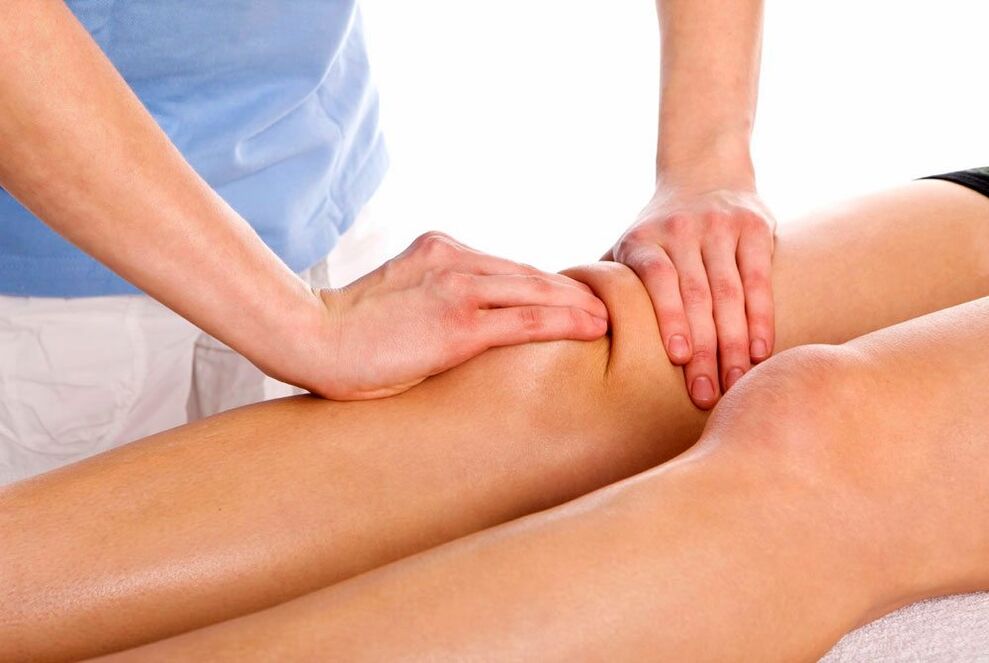
At the same time, gymnastics should be done if the person is not very painful and with the permission of the doctor. All exercises are performed slowly. You can not make sudden movements. If the knees are very sore, then you should switch to the simplest exercises. The weekly load may increase.
In a supine or sitting position, you can do bending and stretching of the limbs, alternating half-bends, pulling the knees to the stomach, moving the legs to the sides. After completing a set of exercises, you should relax, and then move on to the massage. This procedure is also very effective for relieving pain.
Sore knees can be cooked, rubbed on their own, but it would be better if a specialist did that. To get rid of most of the symptoms, you should perform a massage course, a session of which lasts no more than 20 minutes. Rubbing the inner and outer surfaces, as well as the side, is applied pressure to the patella. During the procedure, you must make sure that the person is not injured.
How to treat knee joints at home?
A crack in the knees, as well as pain that appears at night, is an unpleasant phenomenon. Why these symptoms occur is already known. However, it is possible to relieve pain and restore normal joint function not just with medication. You can do this at home with the help of folk remedies.
Getting rid of the pathology quickly will not work. This way, you should treat the knee for at least two months. In addition, you need to find really effective products that have good ratings.
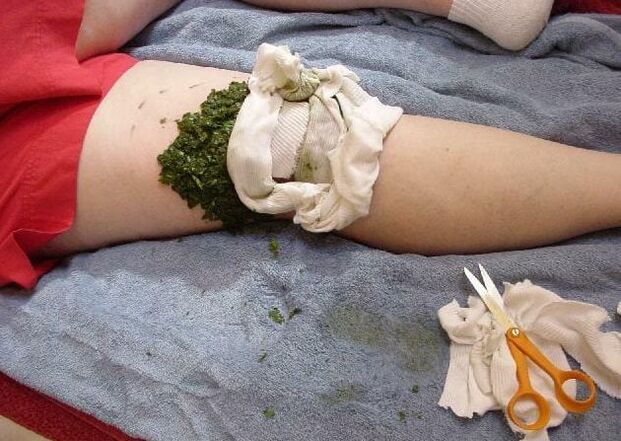
The following recipes may be helpful:
- In half a liter of boiling water, pour 2 tablespoons of lethargy grass, after which you need to let it bake. The drug should be taken twice a day for 100 ml. You can apply a decoction of red leaves on the sore knee as a compress for the night.
- A decoction of oats will help relieve the pain. To prepare it, you need to take a liter of water and a glass of grain. The mixture is boiled and then left to inject overnight. During the day you should use 2 glasses of juice, dividing it into several parts. It takes 2 weeks to treat the joints this way.
- To relieve discomfort and improve blood circulation to the affected area, you can apply a compress of mashed potatoes and horseradish, taken in equal proportions. It will help to get rid of the pain quickly. Apply a compress to the affected knee and cover with a clean cloth. Rinse after 15 minutes. Only 10 procedures are enough to relieve the unpleasant symptoms.
- A mustard compress, which is applied to the sore foot at night, also received good reviews. For its preparation take a tablespoon of mustard mixed with the same amount of honey and soda. By morning, the compress will help relieve severe discomfort.
- If the knee joints ache, the bitter pepper solution can be used for rubbing. A half-liter jar should be filled with chopped pepper, and then pour alcohol on top of the container. You should insist on the medicine for a week.
You can do self-massage of the knee at home.
If you already know why the anxiety appeared, then you can choose the right folk therapies that will help remove them. But before that, you should consult a doctor.
Prevention of pathology
In order for the knee joints to remain healthy and function well for a long time, you need to follow the simple recommendations of doctors:
- Reduce joint stress.
- It is rational to combine rest and work.
- Treat any infectious diseases in the body in time.
- Avoid hypothermia of the extremities.
- After 35 years, it is advisable to start taking chondroprotectors.
- During sports, it is necessary to protect the joints with knee pads - special orthopedic devices for fixing the wrist.
- It is important to normalize your weight.
- Food plays an important role in skeletal health. It is better to reduce the consumption of saturated animal fats, white bread, sweets. More fiber, vegetable oils, vegetables and fruits should be included in the diet. Proper nutrition will not only help alleviate the discomfort, but will also improve the functionality of the joints.












































